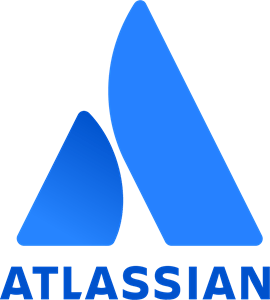Critical Vulnerability in Atlassian Confluence Server
Atlassian Confluence Server, a popular collaboration platform used by many organizations, has recently been exposed to a critical vulnerability that requires immediate attention. The vulnerability allows attackers to remotely execute arbitrary code on a Confluence Server or Data Center instance. This poses a significant threat to the security and integrity of sensitive data stored on the platform. In this article, we will analyze the scope and impact of the vulnerability, provide urgent action recommendations for Atlassian customers, discuss mitigation strategies to secure Confluence Server, assess Atlassian’s response, and conclude with steps to address the immediate threat and future precautions.
Exploitation Analysis: Scope and Impact of the Vulnerability
The critical vulnerability in Atlassian Confluence Server, tracked as CVE-2021-26084, is a server-side request forgery (SSRF) flaw. Exploiting this vulnerability allows attackers to execute remote code with elevated privileges. This means that an attacker can gain unauthorized access to the Confluence Server, view, modify, or steal data, and even potentially compromise the entire network infrastructure. The impact of this vulnerability is severe, especially for organizations that rely on Confluence Server for collaboration and document management. It can result in data breaches, financial loss, legal liabilities, and damage to the organization’s reputation.
Urgent Action Required: Recommendations for Atlassian Customers
Given the critical nature of the vulnerability, it is imperative that Atlassian customers take immediate action to secure their Confluence Server instances. The first and foremost recommendation is to apply the available security patches provided by Atlassian. These patches address the vulnerability and prevent potential exploitation. Furthermore, customers should consider temporarily restricting access to Confluence Server from external networks until the patches are applied. Additionally, organizations should conduct a thorough review of their Confluence Server configuration, ensuring that the server is not exposed unnecessarily and that access control measures are in place. It is also essential to educate users about the risks and encourage them to report any suspicious activities promptly.
Mitigation Strategies: Steps to Secure Confluence Server
To mitigate the risk posed by the critical vulnerability in Atlassian Confluence Server, several steps should be taken. First, ensure that the latest security patches provided by Atlassian are promptly applied. Regularly check for updates and apply them as soon as they become available. Secondly, review and adjust the server’s network configuration to limit unnecessary exposure. Restricting access to trusted IP addresses and employing firewalls can help in this regard. Additionally, implementing multi-factor authentication (MFA) for user accounts adds an extra layer of security. Regular security audits, vulnerability scanning, and penetration testing can help identify potential weaknesses and address them proactively.
Strengths and Weaknesses: Assessing Atlassian’s Response
Atlassian’s response to the critical vulnerability in Confluence Server has been commendable in terms of promptly releasing security patches and actively communicating with customers. Their efforts to raise awareness about the vulnerability and provide mitigation strategies have been valuable. However, some weaknesses in their response must be acknowledged. The initial delay in releasing patches after the vulnerability was discovered led to an extended period of exposure. Additionally, the communication regarding the severity of the vulnerability and the urgency of patching could have been more explicit and targeted. However, overall, Atlassian has demonstrated a commitment to addressing the issue and working closely with customers to ensure the security of their Confluence Server instances.
Conclusion: Addressing the Immediate Threat and Future Precautions
The critical vulnerability in Atlassian Confluence Server demands immediate action from all customers using the platform. Applying the provided security patches, restricting access, and educating users are crucial steps to address the immediate threat. Organizations should also adopt comprehensive mitigation strategies to secure their Confluence Server instances, including regular patching, network configuration reviews, and implementing multi-factor authentication. Furthermore, it is essential to closely monitor Atlassian’s future security updates and promptly apply any patches released. By taking these precautions, organizations can protect their sensitive data and mitigate the risks associated with this critical vulnerability.




